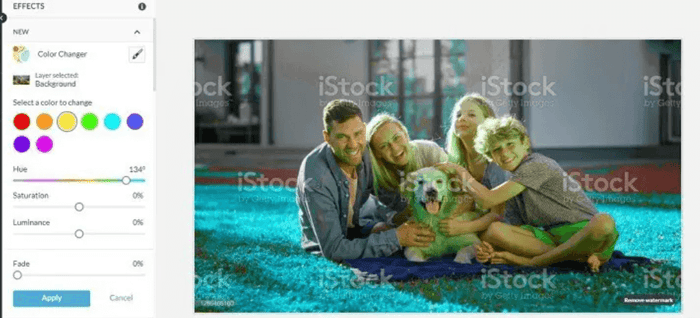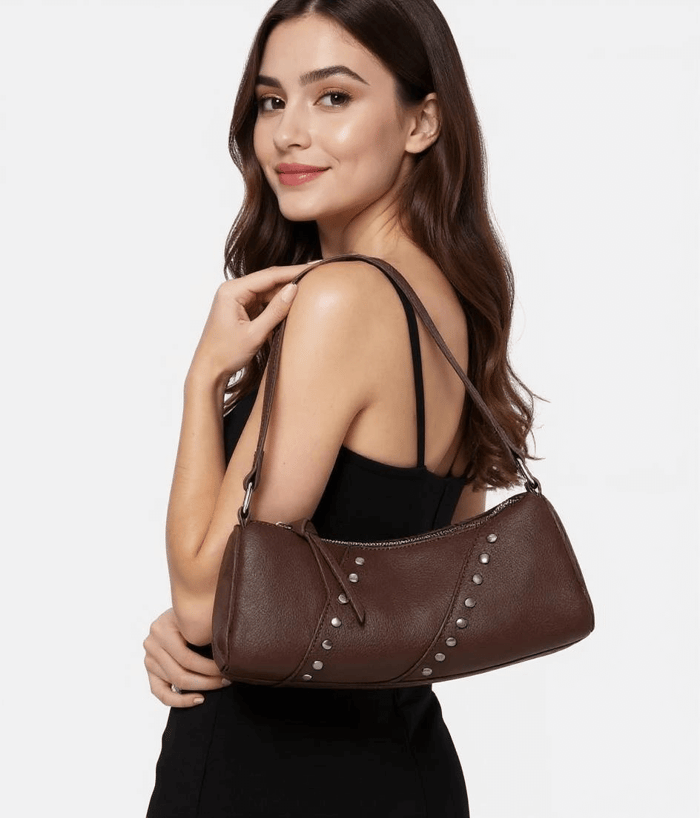AI Recolor Image Tools to Instantly Change Photo Colors
Table of Contents
- Why Use AI to Recolor Images?
- How to Use an AI Recolor Image Tool: Step-by-Step
- Key Features to Look For in an AI Recolor Image Tool
- Use Cases: How Different Industries Benefit from AI Image Recoloring
- Benefits of Using AI to Recolor Images
- See AI Image Recoloring in Action
- Try Modelia AI Tool for Fashion and Ecommerce
- FAQs
An AI recolor image tool is a digital solution that allows users to change the colors in photos using artificial intelligence. Rather than manually selecting areas and adjusting hues, as is common in traditional editing software, AI tools can automatically detect garments, backgrounds, and other objects in the image. Once the image is segmented, users can easily apply different color palettes in a few clicks.
These tools have become especially popular in fashion, retail, interior design, and digital content creation. By automating the recoloring process, they eliminate the need for complex photo editing skills or time-consuming studio reshoots. Whether you want to visualize clothing in different shades or adapt marketing content to match seasonal campaigns, AI recoloring makes it fast and efficient.

Why Use AI to Recolor Images?
Manual image recoloring often involves multiple steps: masking, selecting areas precisely, managing layers, and ensuring color consistency across elements. AI eliminates that complexity and replaces it with automation and speed. But the benefits go beyond just saving time:
Efficiency at scale: Recoloring one image is simple, but when you’re dealing with dozens, or hundreds, of product photos, automation becomes essential.
Visual consistency: AI can apply the same color changes across many images, ensuring a uniform look that supports brand identity.
Cost savings: Skip repeated photoshoots or design revisions. AI lets you simulate color variations without the logistical cost of new photography.
Creative freedom: Brands and creators can explore color ideas quickly, test seasonal palettes, or localize visuals for different markets.
For fashion and ecommerce brands in particular, AI recoloring unlocks a competitive edge. Instead of showing one product photo per SKU, you can now display an entire color range with just one original image.
How to Use an AI Recolor Image Tool: Step-by-Step
Most AI recoloring platforms offer a simple, user-friendly process that anyone can follow, no need for design software or technical experience. Here is a general step-by-step guide:
Upload Your Image
Begin by uploading the image you want to modify. This could be a model shot, product flat lay, editorial photo, or any high-resolution image where colors play an important role.
Automatic Object Detection
Once the image is uploaded, the AI engine will analyze and identify different elements within the picture. Advanced tools are capable of distinguishing between skin, hair, clothing, accessories, and background elements. This automatic segmentation ensures precise recoloring without affecting unintended parts of the image.
Choose the Area to Recolor
After segmentation, you can select specific areas, like a dress, shirt, or wall, to recolor. Most tools provide intuitive interfaces where you click directly on the area or select from detected layers.
Apply a New Color
Choose your desired color from a preset palette or input a specific HEX/RGB code to match your brand or vision. Some tools even allow you to upload a reference image to match exact tones.
Preview and Adjust
The AI tool will instantly render a preview of the recolored image. If needed, you can adjust saturation, brightness, or apply alternative colors. You can also try multiple options before finalizing.
Download the Recolored Image
Once satisfied, export the image in your desired format and resolution. Most platforms offer high-quality download options suitable for both web and print use.

Key Features to Look For in an AI Recolor Image Tool
Choosing the right AI recolor tool can make a significant difference in the quality and speed of your workflow. Here are some important features to consider:
Accurate object recognition: Look for tools that can intelligently distinguish between clothing, skin, background, and accessories.
Segment-specific recoloring: You should be able to change only the part you want without affecting the rest of the image.
Batch processing capabilities: Essential for ecommerce teams that need to recolor hundreds of images quickly.
Color palette customization: Support for HEX codes, brand palettes, or automatic palette generation based on your style guide.
High-resolution export: Ensure the platform provides full-resolution outputs suitable for professional use.
Simple, no-code interface: Ideal for marketers, content creators, and ecommerce teams without design experience.
Use Cases: How Different Industries Benefit from AI Image Recoloring
Fashion Ecommerce
One of the most common use cases for AI recoloring is in fashion ecommerce. Brands that offer products in multiple color variants can showcase each version without reshooting the item. This saves time, money, and simplifies catalog creation. Recolored garments retain texture, folds, and lighting, maintaining a natural look.
Interior Design
Interior designers and furniture brands use AI recoloring to test how a space would look with different upholstery, wall paints, or decorative accents. This makes client presentations more dynamic and personalized.
Visual Branding
Marketing teams use AI recoloring tools to create brand-consistent assets. For instance, seasonal promotions might require adjusting the color scheme of existing visuals to reflect new campaigns or holidays.
Digital Content Creation
Content creators and influencers benefit from the ability to recolor outfits or props for aesthetic alignment with their feed or audience preferences. It also helps in experimenting with creative direction before investing in new visuals.
Photography and Art
Photographers use recoloring tools to test different color grades, enhance visual storytelling, or adapt photos to specific editorial requirements. Digital artists may recolor elements as part of their creative process.
Benefits of Using AI to Recolor Images
| Benefit | Description |
| Speed | Complete color changes in seconds instead of hours |
| Accessibility | No design background needed |
| Scalability | Recolor one or thousands of images with equal precision |
Cost-efficiency | Reduce or eliminate the need for reshoots and complex photo editing |
Brand alignment | Maintain visual consistency across marketing, ecommerce, and social channels |
| Experimentation | Test multiple ideas quickly and confidently before committing to final assets |
See AI Image Recoloring in Action
Imagine being able to change a product’s appearance across 10 different colors in minutes, without touching a camera. AI makes this possible.
Whether you're updating a seasonal campaign, localizing visuals for a new market, or experimenting with creative direction, AI recoloring provides a fast, flexible, and cost-effective solution.
If you’re a fashion or ecommerce brand, this isn’t just a design shortcut—it’s a powerful business tool that accelerates time to market and enhances customer experience.
Try Modelia AI Tool for Fashion and Ecommerce
Modelia’s AI-powered platform is built specifically for fashion brands and ecommerce teams. Our AI Recolor Image Tool uses advanced garment recognition to deliver photo-realistic color changes in just seconds. No masking, no layers, no technical hurdles.
With Modelia, you can:
Generate models out of a garment photo
Match exact brand colors using HEX codes
Visualize colorways before production
Create marketing variations without extra content shoots
Start for free and see how fast and easy AI recoloring can be.

FAQs
Can I recolor only specific parts of an image?
Yes. AI segmentation allows precise targeting of garments, backgrounds, or other objects without affecting the entire photo.
Does recoloring affect image quality?
No. Leading tools like Modelia retain original image resolution and preserve texture and shadow for realistic results.
Is this better than manual Photoshop editing?
For speed and scalability, yes. While Photoshop offers full control, AI recoloring delivers 90% of the result in 10% of the time.
Can I recolor images for social media or ecommerce use?
Absolutely. AI tools are optimized for high-resolution outputs that perform well on websites, lookbooks, product pages, and social platforms.
How would you rate this article:
Related Articles
- How to Turn Cartoons into Realistic Images with AI
- Best AI Clothing Models for your Website Store
- Christmas Party Dress Styles to Shine This Holiday Season
- The Best Fashion Photographers to Follow on Instagram
- Best AI Content Generator Tools to Try in 2025
- 5 AI Tools for Image Enhancement to Achieve Professional-Quality Results
- Top Fashion Brands to Follow on TikTok
- Top 5 AI Image Enhancers for Stunning Visual Enhancements
- Shopify vs Magento: Key Differences Explained
- Learn How to Create Videos Using AI Technology


